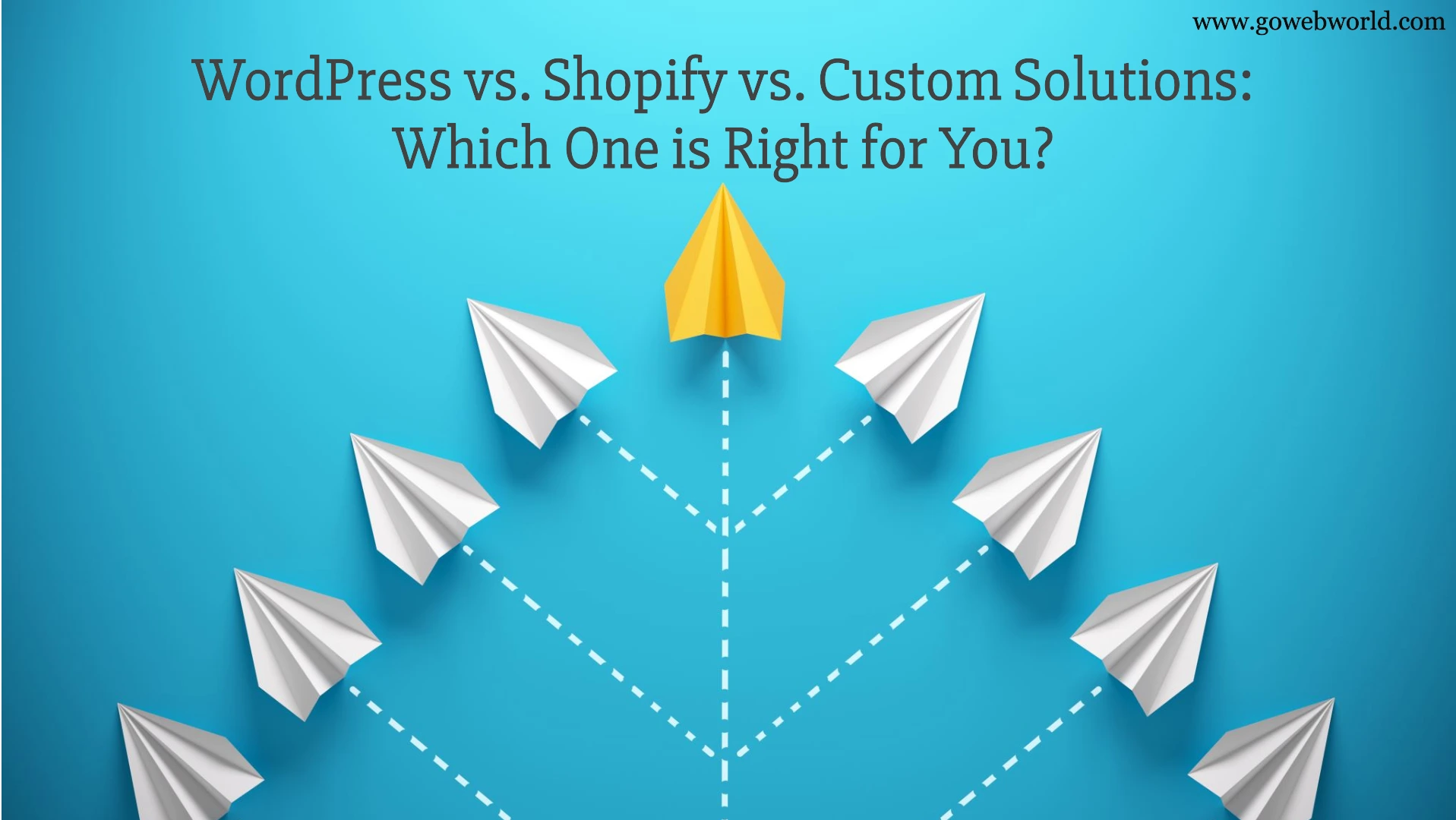Choosing the right platform for your website can be a daunting task, especially with so many options available. For businesses looking to establish a robust online presence, understanding the strengths and limitations of WordPress, Shopify, and custom solutions is critical. As a leading web development company, GoWebWorld Technologies specializes in providing tailored solutions, whether you need WordPress development, Shopify expertise, or a fully customized website. This guide will help you determine which option best suits your needs.
WordPress: The Versatile Content Management System
WordPress is one of the most popular website platforms, powering over 40% of websites globally. Known for its flexibility, WordPress is ideal for businesses of all sizes, from bloggers to large enterprises.
Advantages:
- Customizability: WordPress offers thousands of themes and plugins, allowing businesses to create highly personalized websites.
- Cost-Effective: With free and premium options, WordPress suits a wide range of budgets.
- SEO-Friendly: Built-in SEO tools and plugins like Yoast make optimizing your site straightforward.
- Scalability: WordPress can handle websites of all sizes, from small blogs to complex e-commerce stores.
Challenges:
- Requires regular maintenance and updates.
- Some plugins may conflict with each other, causing issues.
- Security vulnerabilities if not properly managed.
GoWebWorld Technologies, a trusted WordPress development company in Chandigarh, ensures seamless implementation, maintenance, and customization to help businesses maximize the platform’s potential.
Shopify: The E-Commerce Powerhouse
Shopify is a dedicated platform for e-commerce businesses, offering a user-friendly interface and robust features tailored for online stores.
Advantages:
- Ease of Use: Shopify’s intuitive interface makes it easy for non-technical users to set up and manage stores.
- Integrated Payment Gateway: Shopify provides a secure and seamless payment processing system.
- Mobile-Optimized: Themes are mobile-responsive, ensuring a great user experience across devices.
- App Ecosystem: Shopify offers a wide range of apps to enhance functionality, from inventory management to marketing automation.
Challenges:
- Monthly subscription costs can add up, especially for advanced plans.
- Limited customizability compared to WordPress or custom solutions.
- Dependency on Shopify’s ecosystem.
As a leading Shopify development company in Chandigarh, GoWebWorld Technologies helps businesses create visually stunning and highly functional e-commerce stores, tailored to drive sales and customer engagement.
Custom Solutions: Tailored to Your Unique Needs
For businesses with specific requirements that off-the-shelf platforms can’t meet, custom website development offers unparalleled flexibility and scalability.
Advantages:
- Complete Control: Custom solutions are built from scratch, ensuring they meet every business requirement.
- Unique Design: A custom website reflects your brand identity without limitations.
- Enhanced Performance: Optimized for speed and functionality, custom websites offer superior performance.
- Integration: Easily integrate with existing systems, such as CRMs and ERPs.
Challenges:
- Higher initial development costs.
- Longer development timelines compared to ready-made platforms.
- Requires a reliable development partner.
With extensive expertise in custom development, Gowebworld Technologies delivers bespoke websites designed to meet the unique goals of businesses in Chandigarh and beyond.
Comparing the Platforms: Which One Is Right for You?
| Feature | WordPress | Shopify | Custom Solutions |
|---|---|---|---|
| Ease of Use | Moderate | High | Varies |
| Cost | Low to Moderate | Moderate to High | High |
| Customization | Extensive (with plugins) | Limited | Unlimited |
| Best For | Blogs, corporate websites, SMBs | E-commerce stores | Unique and complex needs |
How GoWebworld Technologies Can Help
Choosing the right platform depends on your business goals, budget, and technical requirements. As experts in WordPress, Shopify, and custom development, GoWebWorld Technologies guides you through the decision-making process to ensure the best outcome. Our team provides:
- Consultation: Understanding your business needs to recommend the ideal platform.
- Implementation: Seamless setup and development tailored to your goals.
- Maintenance: Ongoing support to ensure your website runs smoothly.
- Optimization: Enhancing performance, SEO, and user experience.
Whether you’re looking for a flexible CMS like WordPress, an e-commerce solution like Shopify, or a custom-built website, the choice of platform can significantly impact your business’s online success. With a proven track record as a WordPress development company in Chandigarh, a Shopify development company in Chandigarh, and a provider of custom solutions, Gowebworld Technologies is your go-to partner for all web development needs.
Let us help you build the perfect website tailored to your business. Contact GoWebWorld Technologies today and take the first step towards achieving your digital goals.

